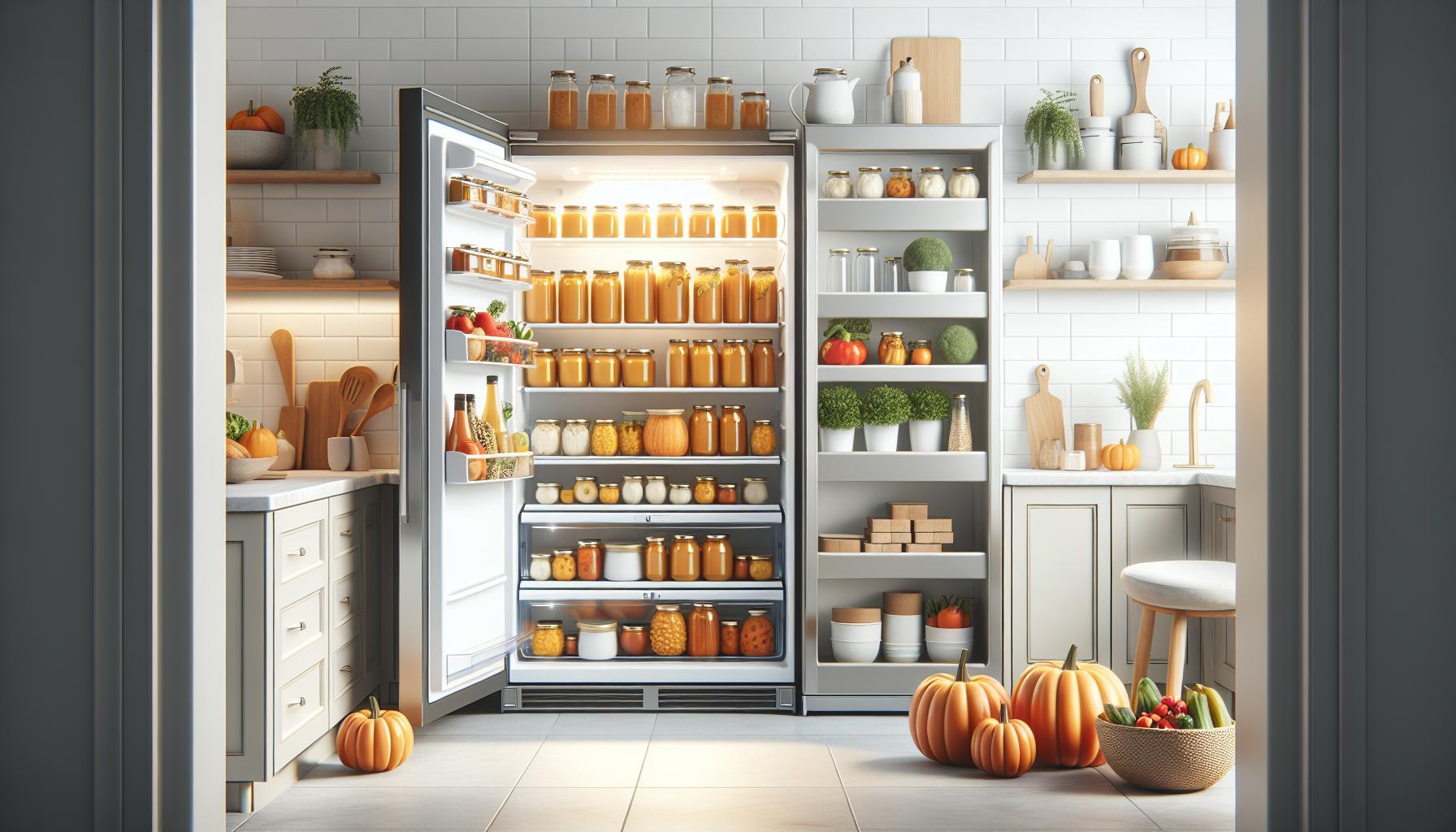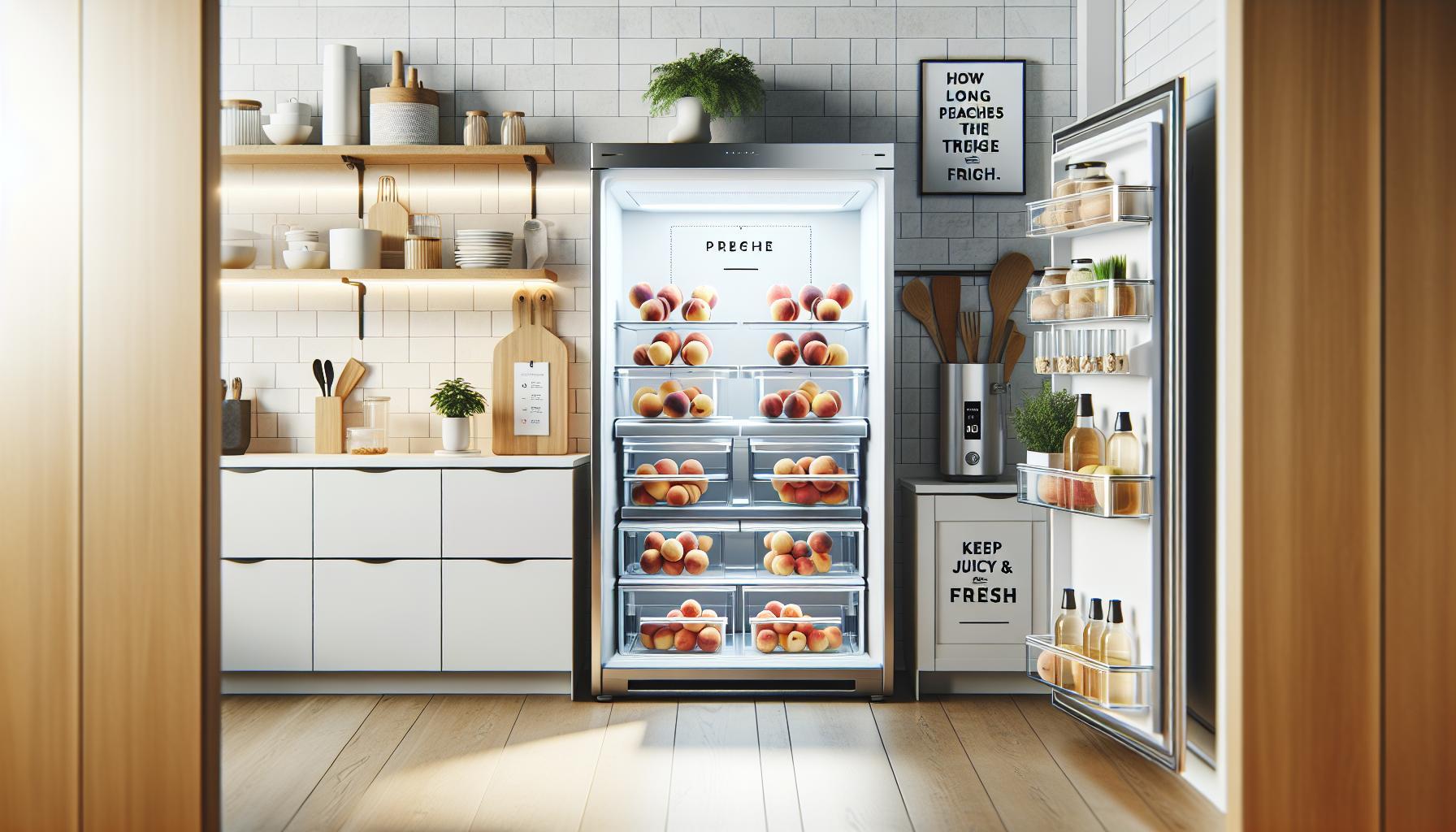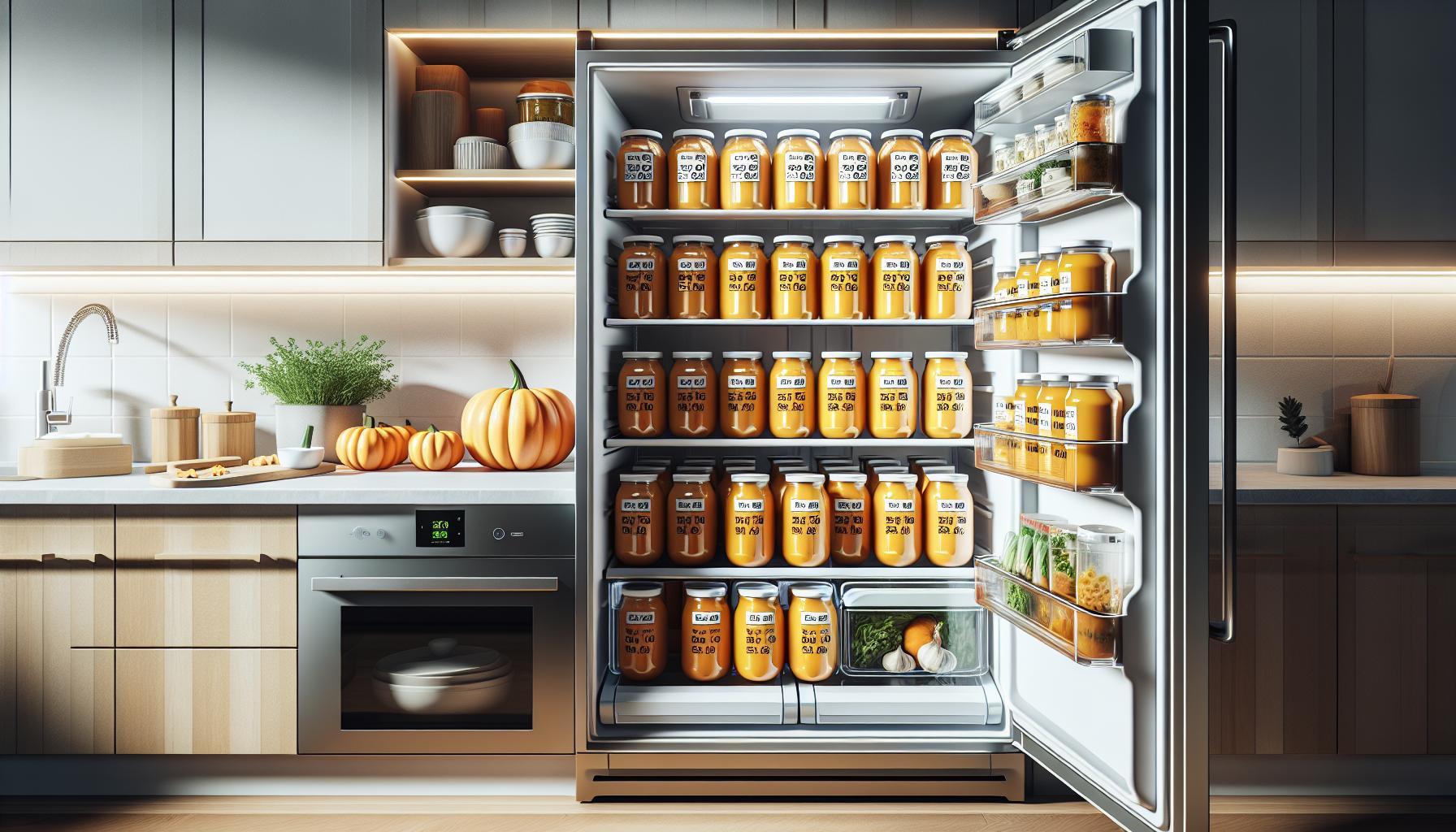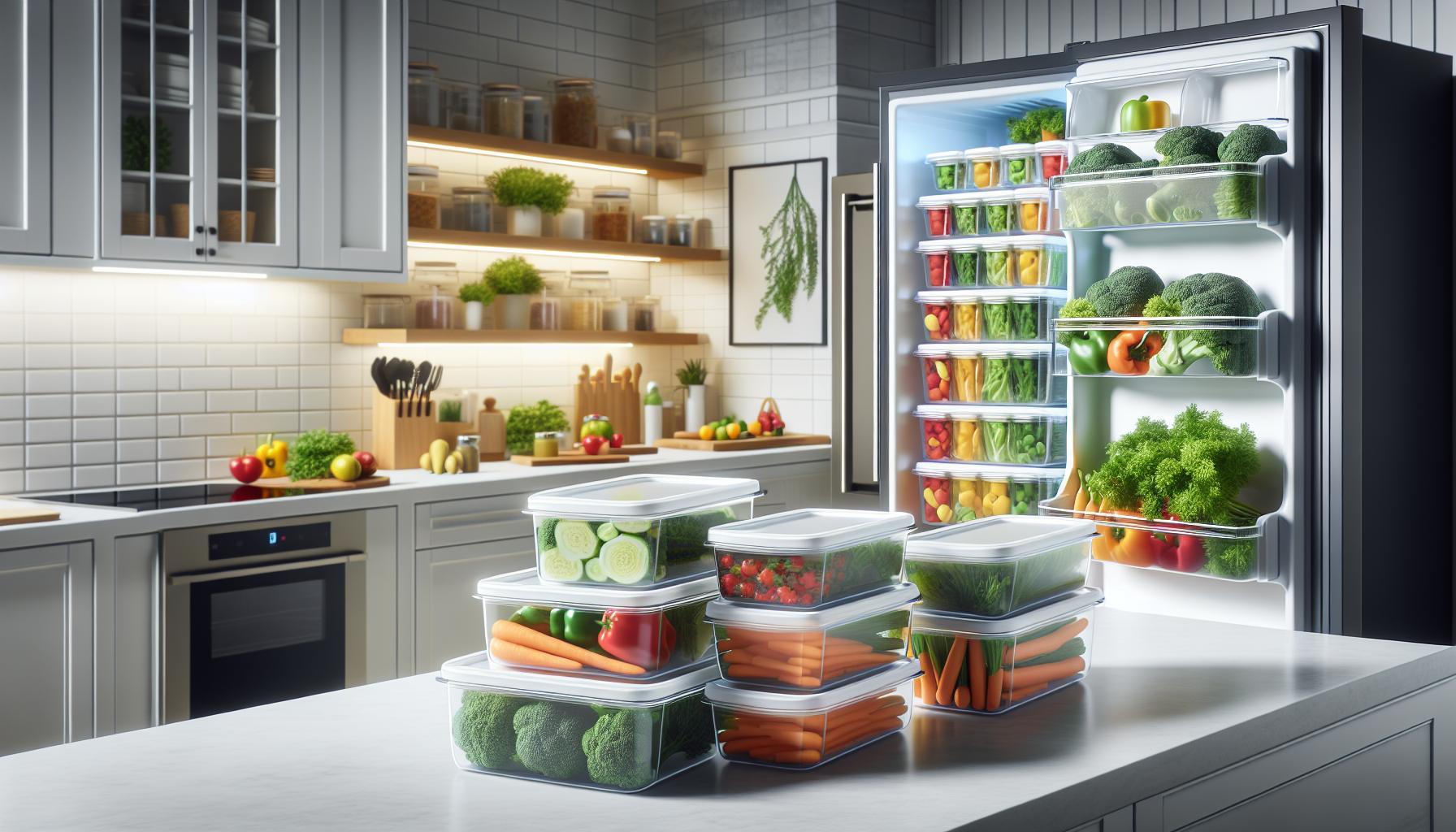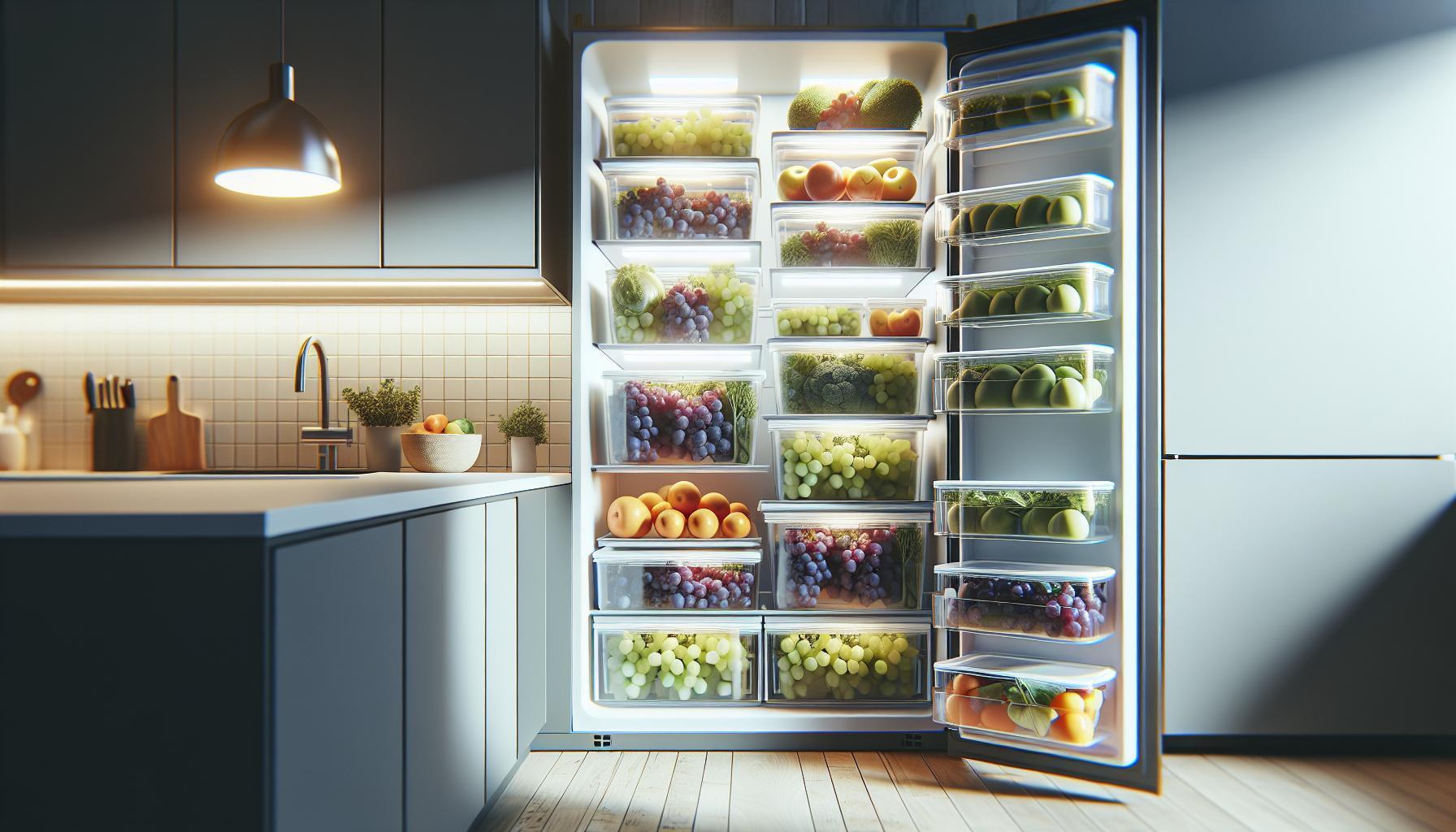Pumpkin puree is a versatile ingredient that can enhance various dishes, from delicious pies to rich soups. However, many cooking enthusiasts wonder: how long can you keep this beloved puree in the fridge without it going bad? Understanding the shelf life of pumpkin puree is essential not just for food safety, but also for maximizing its flavor and nutritional benefits.
Whether you’ve just opened a can or made a batch from scratch, knowing how to store pumpkin puree properly can prevent waste and enhance your culinary experience. In this article, we’ll delve into effective storage tips, clear timeframes, and signs of spoilage to ensure your pumpkin puree stays fresh and safe to use. Keep reading to discover how to make the most of this seasonal favorite while avoiding any unpleasant surprises in your kitchen.
How Long Can Pumpkin Puree Stay Fresh in the Fridge?
Pumpkin puree is a versatile and nutritious ingredient that many cooks enjoy using, especially in fall recipes. If you’ve recently opened a can or made a batch from scratch, it’s important to know how long you can safely keep this delicious puree in the fridge. Generally, homemade or opened canned pumpkin puree will stay fresh in your refrigerator for about 5 to 7 days when stored properly. To ensure optimal freshness, always place the puree in an airtight container, which helps to prevent it from absorbing odors from other foods and keeps it from drying out.
As with any food, the exact duration of freshness can vary based on storage conditions and ingredients. If you’ve made your own pumpkin puree, be sure to cool it completely before sealing it in a container and placing it in the fridge. This practice not only maintains the texture and flavor but also minimizes the risk of bacterial growth. If you notice any unusual changes in color, texture, or smell, it’s best to err on the side of caution and discard the puree to avoid any potential health risks.
For added peace of mind, you can label your containers with the date you made or opened the puree, allowing you to track its freshness more accurately. By following these straightforward guidelines, you can enjoy your pumpkin puree at its best and incorporate its unique flavor into your recipes throughout the week.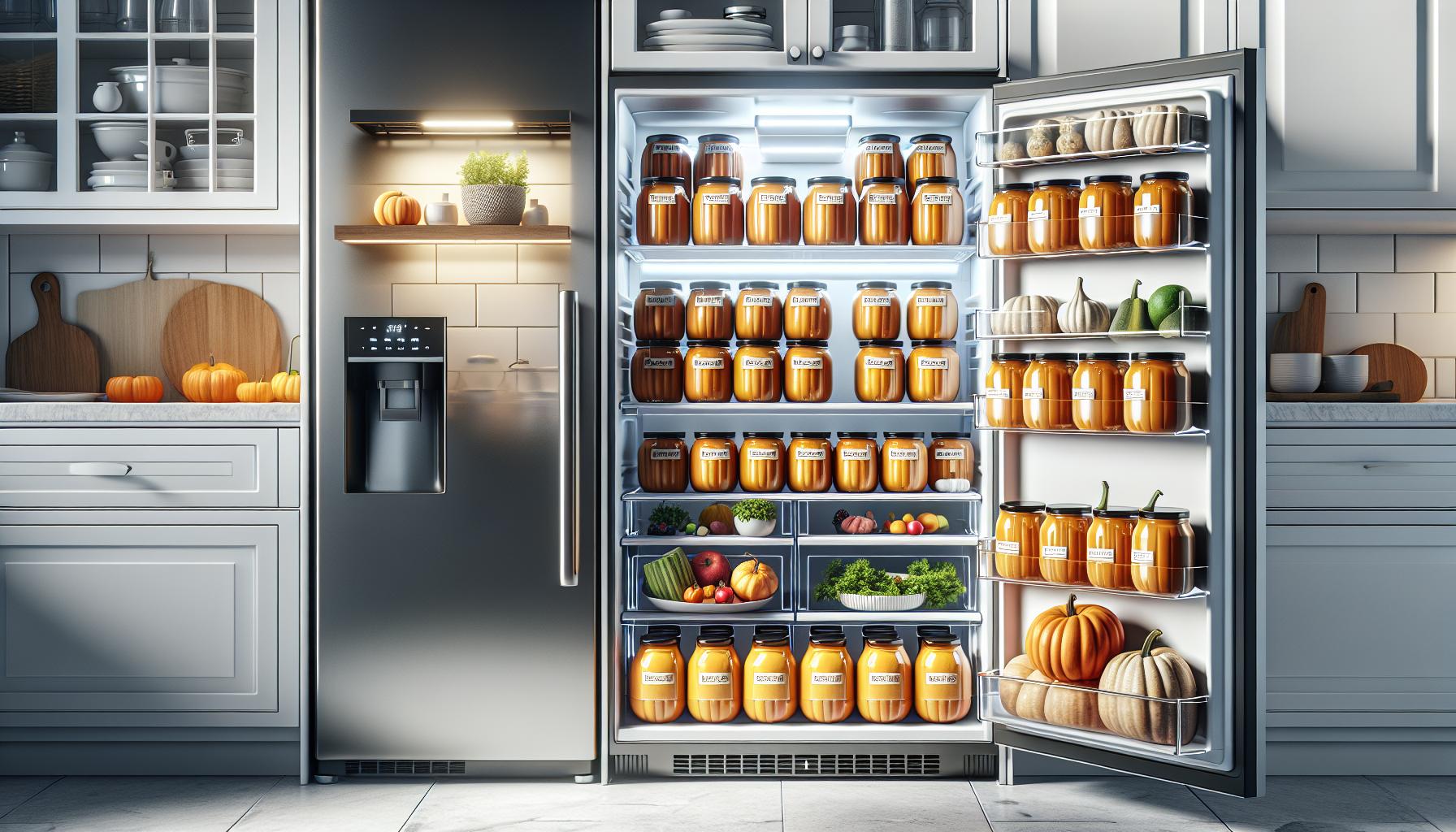
Signs That Your Pumpkin Puree Has Spoiled
It’s important to recognize when your pumpkin puree has gone bad to avoid any adverse health effects. Spoilage can manifest in several noticeable ways, and being vigilant about these signs can help ensure you only use fresh ingredients in your dishes.
One of the most immediate indicators of spoilage is a change in color. Fresh pumpkin puree should maintain its vibrant orange hue. If you notice any darkening or discoloration, it may suggest that the puree is degrading. Additionally, the texture is a critical factor; if the puree becomes excessively watery, grainy, or develops a moldy surface, it’s best to discard it immediately. Mold can appear as fuzzy spots of various colors, and the presence of any mold is a clear sign that the puree is no longer safe to consume.
Furthermore, the smell of the puree is a crucial aspect to check. Fresh pumpkin puree has a mild, sweet aroma, whereas spoiled puree may emit sour or off-putting odors, indicating bacterial growth. If any unusual smells are detected, it’s advisable to err on the side of caution and dispose of the puree.
Keep in mind that these signs of spoilage can develop quickly, especially if the puree hasn’t been stored properly. Regularly checking your pumpkin puree for these indicators will help you avoid using spoiled ingredients and ensure your culinary creations remain delicious and safe to eat.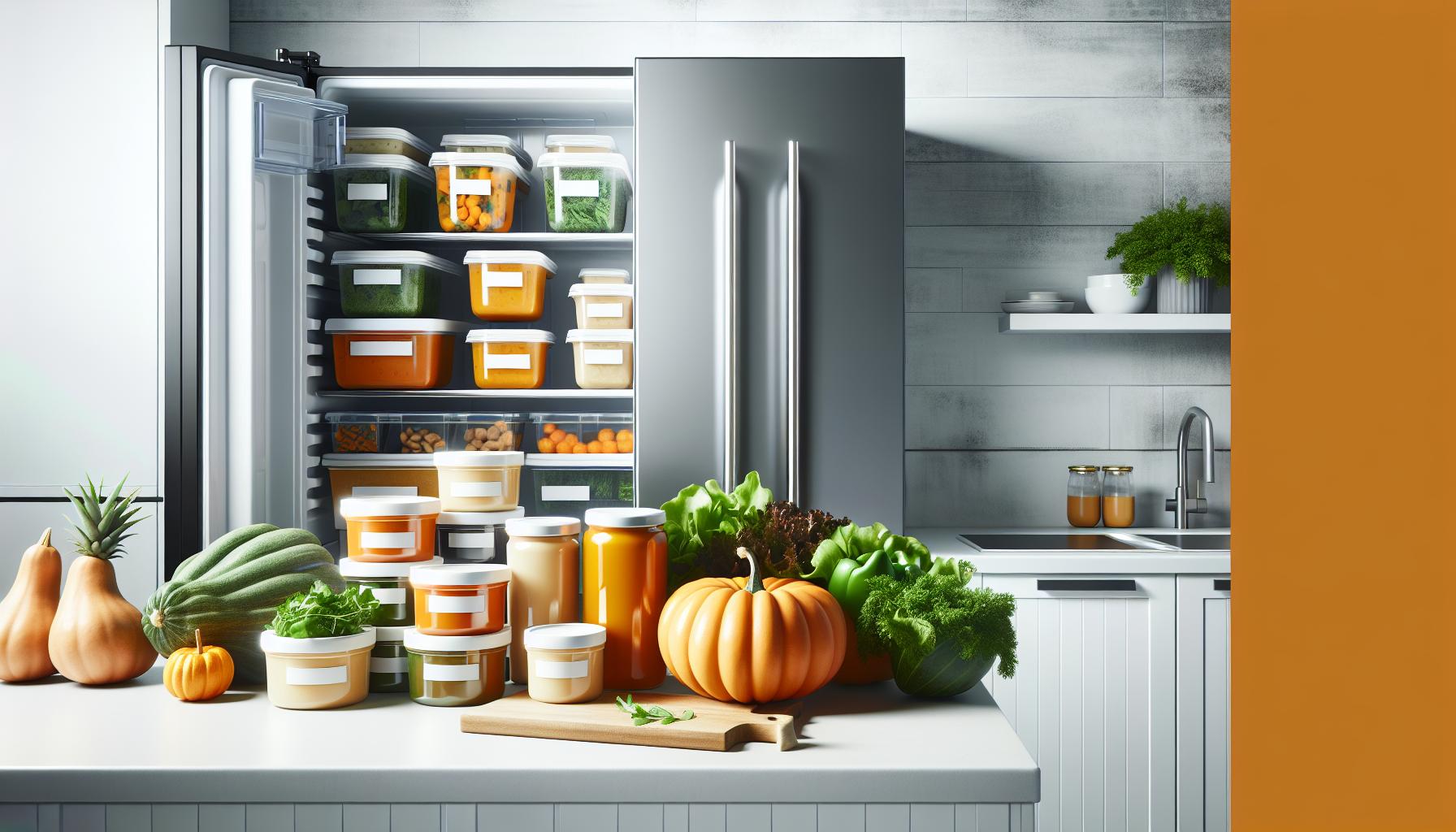
Best Practices for Storing Pumpkin Puree
To maintain the freshness of pumpkin puree and maximize its shelf life, it is essential to follow specific storage practices. Homemade or opened canned pumpkin puree can typically be kept in the refrigerator for about 3 to 7 days. Ensuring that it remains fresh starts with the right initial storage methods.
First, always store your pumpkin puree in an airtight container. This prevents exposure to air, which can lead to oxidation and spoilage. Glass containers with tight-fitting lids or heavy-duty plastic containers are ideal because they create a solid seal. Prior to sealing the container, make sure the puree has cooled completely if it was heated, as steam can build up inside the container and promote mold growth.
Refrigeration Tips
When placing the container in the refrigerator, choose a spot that maintains a consistent, cool temperature-typically on a middle shelf rather than in the door, where temperatures fluctuate more frequently. It’s wise to label the container with the date of storage to monitor its freshness easily. Following this practice will help you use the puree before it spoils.
Longer Storage Solutions
If you find yourself with excess pumpkin puree, consider freezing it for long-term storage. Pumpkin puree can be frozen for up to 3 months while retaining its flavor and nutritional content. For freezing, portion the puree into freezer-safe bags or containers, expelling as much air as possible before sealing. This method also allows for easy thawing-you can defrost just what you need for recipes later.
Maintaining these not only helps extend its lifespan but also ensures your meals retain the delicious flavor and health benefits of fresh pumpkin.
How to Extend the Shelf Life of Pumpkin Puree
To help retain the freshness of pumpkin puree and avoid unnecessary waste, employing effective storage techniques is key. First and foremost, always ensure that the puree is stored in an airtight container. This not only protects it from exposure to air-which can lead to oxidation and spoilage-but also prevents it from absorbing any odors from other items in your refrigerator. Opt for glass jars or heavy-duty plastic containers with tight-fitting lids, which provide an effective barrier against moisture and contaminants.
Making sure that the pumpkin puree is completely cooled before sealing the container is crucial. If steam is trapped, it can create a humid environment favorable to mold growth, which can spoil your puree prematurely. Additionally, place the container on a middle shelf of your refrigerator where temperatures are most stable, rather than in the door, where they can fluctuate more dramatically.
Should you want to keep pumpkin puree for an extended period, freezing is the best option. Puree can be frozen for up to three months without sacrificing its flavor or nutritional quality. For optimal freezing, portion the puree into freezer-safe bags or containers, ensuring to remove as much air as possible before sealing. This not only maximizes space but also facilitates easy thawing, allowing you to defrost only what you need for your recipes.
Being proactive with these simple yet effective storage practices will help you enjoy the deliciousness and nutritional benefits of pumpkin puree for longer, creating less waste and ensuring your meals remain flavorful and wholesome.
Can You Freeze Pumpkin Puree? Storage Tips
Freezing pumpkin puree is an excellent way to preserve its rich flavor and nutritional value for extended periods, allowing you to enjoy this versatile ingredient beyond its seasonal availability. When frozen properly, pumpkin puree can maintain its quality for up to three months. To effectively freeze pumpkin puree, consider using the following guidelines to ensure it retains its best taste and texture.
Start by portioning the puree into amounts that suit your recipe needs, typically around one cup or even smaller proportions for individually sized servings. This not only makes for easier thawing but also reduces waste, as you can defrost just what you need. Use high-quality freezer-safe containers or heavy-duty freezer bags to protect against freezer burn. Before sealing, remove as much air as possible from bags to create a vacuum-sealed environment, which is vital for preserving flavor and avoiding ice crystals.
Label each container with the date and quantity for convenience, which helps you track how long the puree has been stored. When it comes time to use your frozen pumpkin puree, transfer it from the freezer to the refrigerator the night before to allow it to thaw gradually. For quicker results, you can submerge the sealed bag in cool water or use the microwave’s defrost setting, but avoid applying direct heat, as this can affect texture and flavor.
To maximize the fresh taste of your puree upon thawing, consider waiting to incorporate it into recipes that require cooking or baking, as the flavors meld beautifully when heated. Whether it’s for pies, soups, or sauces, having frozen pumpkin puree on hand makes it easy to whip up seasonal dishes anytime you crave them.
Creative Ways to Use Leftover Pumpkin Puree
Leftover pumpkin puree is a treasure trove of culinary creativity waiting to happen. This versatile ingredient can elevate a variety of dishes beyond the classic pie, allowing you to savor its rich flavor long after the autumn season. Here are some innovative ideas to incorporate that leftover puree effectively and deliciously.
Start your day right by adding pumpkin puree to your breakfast routine. It can blend seamlessly into oatmeal or pancake batter, delivering a nutritious boost along with a hint of sweetness. For a cozy touch, prepare pumpkin spice muffins or bread, infusing your baked goods with the comforting essence of fall. Simply replace some sugar or fat in recipes with puree for added moisture and flavor.
Another delightful way to use pumpkin puree is in savory dishes. Consider stirring it into soups or stews, where it can lend creaminess without the need for heavy dairy. A pumpkin-centric risotto adds depth and richness, while a smooth pumpkin curry can warm you up on chilly nights. Even sauces benefit; try mixing it into pasta sauce for a unique twist that will surprise your dinner guests.
For those seeking a quick snack or a healthful dessert, combine pumpkin puree with Greek yogurt for a protein-packed treat that’s highly satisfying. Add spices, honey, or maple syrup to taste. Pumpkin puree can also be swirled into smoothies, delivering an autumnal flavor profile for any time of the year.
By understanding how to utilize leftover pumpkin puree, you can minimize waste while indulging in seasonal flavors. These creative approaches not only enhance your meals but also ensure that your pumpkin puree remains a staple long after the holidays are over. Always remember to store any remaining puree properly in an airtight container in the fridge, where it can stay fresh for about a week, or opt to freeze it for longer preservation.
Pumpkin Puree vs. Pumpkin Filling: What’s the Difference?
Pumpkin products can often cause confusion in the kitchen, especially when trying to distinguish between pumpkin puree and pumpkin filling. While both ingredients may look similar, their uses and compositions are quite different, which can significantly affect your recipes.
Pumpkin puree is simply cooked and pureed pumpkin, typically made from sugar pumpkins or pie pumpkins known for their rich flavor and smooth texture. This ingredient is celebrated for its natural taste and versatility, making it ideal for a variety of dishes ranging from soups to baked goods. When purchasing pumpkin puree, you can often find it canned or fresh, but it should contain one ingredient: pumpkin. This simplicity allows cooks to add their own spices and sweeteners based on personal preference or specific recipes.
On the other hand, pumpkin filling is a product designed primarily for making pumpkin pie. It is a pre-seasoned blend that usually includes not just pumpkin puree, but also a mixture of sugar, spices (such as cinnamon and nutmeg), and sometimes preservatives. This makes pumpkin filling convenient for quick pudding-style desserts but less adaptable to other culinary applications without adjustment. If you reach for a can labeled “pumpkin filling” expecting the same outcome as you would with pumpkin puree, your dish might turn out overly sweet or spiced, possibly compromising the intended flavor profile.
Understanding the difference between these two products is crucial for optimal cooking. A good practice is to always check the ingredient list, choosing pumpkin puree for a more controlled cooking experience where you can dictate the flavor. If you’re in a pinch and only have pumpkin filling, you can adjust the recipe by reducing added sugar or spices, but it won’t deliver the same fresh pumpkin experience.
In summary, when discussing freshness, storing and using pumpkin puree correctly ensures that you can savor its natural flavor, while knowing about pumpkin filling allows for quicker preparations but with less flexibility. Keep a close eye on labels and select the right type for your recipe, ensuring that your culinary creations are both delicious and safely prepared.
Health Risks of Using Spoiled Pumpkin Puree
Using spoiled pumpkin puree can pose significant health risks, as improper storage or prolonged refrigeration allows harmful bacteria to grow. Pumpkin puree, whether homemade or canned, is a perishable product that can become a breeding ground for pathogens if it is not used within a safe timeframe. The danger of consuming spoiled puree lies primarily in the risk of foodborne illnesses caused by bacteria such as Salmonella, E. coli, or mold.
It is essential to know the signs that indicate pumpkin puree has gone bad. Look for changes in color, an off or sour smell, or the presence of mold on the surface. If any of these signs are present, it’s best to err on the side of caution and dispose of the puree. Never taste the product to determine its safety, as some contaminants can produce toxins that are not neutralized by cooking.
In terms of storage, pumpkin puree should be kept in an airtight container in the refrigerator and consumed within 3 to 5 days after opening or preparation. If you find that you won’t be able to use it within this timeframe, consider freezing it instead. Frozen pumpkin puree can last for up to six months, allowing you to enjoy the flavors of fall long after the season has passed. Always label containers with the date of freezing to keep track of its age.
To further minimize health risks, maintain good hygiene practices when preparing and storing pumpkin puree. Always wash your hands, utensils, and surfaces thoroughly before and after handling food. Keeping your refrigerator at a safe temperature (below 40°F or 4°C) is also critical to inhibit bacterial growth. By following these guidelines, you can enjoy your pumpkin-based dishes without compromising your health.
Tips for Making Homemade Pumpkin Puree
Making homemade pumpkin puree is not only a rewarding kitchen project but also ensures you have a fresh ingredient that can be used in various recipes. The process begins with selecting the right type of pumpkin, ideally a sugar pumpkin or pie pumpkin, as these varieties have the ideal sweetness and texture. Begin by preheating your oven to 400°F (200°C) and prepare your pumpkins by cutting them in half and scooping out the seeds and stringy insides.
Next, you can roast the pumpkin halves cut-side down on a baking sheet lined with parchment paper for about 45 minutes to an hour, or until the flesh is tender. Once roasted, allow the pumpkin to cool slightly before scooping out the flesh and transferring it to a blender or food processor. Blend until the puree is smooth, and if it’s too watery, consider straining it using a cheesecloth or a fine mesh sieve to achieve a thicker consistency.
To maximize the shelf life of your homemade pumpkin puree, remember to store it in an airtight container in the refrigerator. Homemade puree is best used within 3 to 5 days. If you won’t use it all within that timeframe, freezing is an excellent option. Simply portion the puree into freezer-safe bags or containers, removing as much air as possible to minimize freezer burn. Label and date each container to keep track of how long they’ve been stored, as frozen pumpkin puree can last for about six months.
Emphasizing food safety, it’s crucial to maintain proper hygiene throughout the process. Wash your hands and all utensils thoroughly before starting. Additionally, keep your refrigerator at a safe temperature below 40°F (4°C) to inhibit bacterial growth. Following these steps ensures that your homemade pumpkin puree remains fresh and safe, allowing you to enjoy delicious pumpkin-based dishes without concerns about spoilage.
Reusing Pumpkin Puree: Recipes and Ideas
Using leftover pumpkin puree creatively in the kitchen not only reduces waste but also adds a delightful fall flavor to various meals and snacks. When you’ve got open containers of pumpkin puree lingering in your fridge, consider transforming them into delicious recipes that the whole family will enjoy. It’s a versatile ingredient that can easily be integrated into both sweet and savory dishes.
One of the easiest ways to use leftover pumpkin puree is in baked goods. Incorporate it into your muffins, pancakes, or bread recipes to add moisture and a subtle sweetness. For a simple treat, try making pumpkin muffins. Just replace some of the fat or liquid in your favorite muffin recipe with pumpkin puree. You can also stir it into oatmeal or yogurt for a quick breakfast option, or blend it into smoothies for added creaminess and nutrition.
If you’re in the mood for something savory, pumpkin puree can enhance soups, sauces, and curries. It can be whisked into creamy pasta sauces or added to chili for a smooth texture and rich flavor. Consider making a comforting pumpkin soup by sautéing onions, garlic, and spices, then adding in your puree and vegetable stock. Blend until smooth for a delightful fall-inspired dish that’s both hearty and healthy.
For a fun dessert twist, mix pumpkin puree into your favorite cheesecake, smoothie bowl, or even chocolate chip cookie dough to create a unique flavor profile. You can also use it in place of eggs in vegan baking, making it a great substitute for added moisture and binding. The possibilities are endless; just remember, pumpkin puree shines best when paired with spices like cinnamon, nutmeg, and ginger, which will enhance its natural flavor and aroma.
In short, whether you’re baking, cooking, or whipping up a quick breakfast, there’s no shortage of ways to repurpose pumpkin puree in your kitchen. With proper storage and a bit of creativity, you can turn what might otherwise go to waste into delicious and satisfying meals.
Understanding Food Safety Guidelines for Purees
Ensuring the safety of purees involves understanding proper storage practices to prevent spoilage and foodborne illness. Especially for homemade pumpkin puree, following food safety guidelines is essential since it can be an inviting environment for bacteria if not stored correctly. Pumpkin puree can remain fresh in the refrigerator for about 3 to 5 days, but to make the most of its shelf life, it’s crucial to utilize safe food handling practices from the moment of preparation.
To enhance safety, always store pumpkin puree in airtight containers. This limits exposure to air, which can accelerate spoilage, and also prevents any contamination from other foods in the fridge. Label containers with the date the puree was made or opened; this simple tip keeps track of freshness. Upon inspection, if your puree has an off smell, changes in color or texture, or visible mold, it’s best to err on the side of caution and dispose of it.
Understanding the differences between pumpkin puree and commercial pumpkin filling can also help prevent food safety mishaps. Pumpkin filling often contains preservatives and sugars that can extend its shelf life, while pure pumpkin puree is more susceptible to spoilage due to its lack of additives. Thus, always check whether you’re dealing with pure puree or a filling product, as this impacts both culinary uses and storage practices.
Additionally, if you anticipate not using your pumpkin puree within a week, consider freezing it. Properly stored in the freezer, pumpkin puree can last for up to 6 months. Use resealable freezer bags or airtight containers, making sure to remove as much air as possible. When you’re ready to use it, thaw it in the refrigerator overnight, and remember, as with any food product, do not refreeze thawed pumpkin puree. Following these guidelines not only ensures safety but also enhances your culinary experience by preserving the fresh flavor of pumpkin.
Frequently asked questions
Q: How can I tell if pumpkin puree is still good to eat?
A: Check for off smells, changes in color, or a slimy texture, which indicate spoilage. If it has a sour taste or signs of mold, it should be discarded. For more details, see the section on “Signs That Your Pumpkin Puree Has Spoiled.”
Q: Can I store opened pumpkin puree in the freezer?
A: Yes, opened pumpkin puree can be frozen for up to three months. Transfer it to an airtight container or freezer bag, removing as much air as possible. Refer to the “Can You Freeze Pumpkin Puree?” section for more tips on proper storage.
Q: What is the best way to reheat leftover pumpkin puree?
A: The best way to reheat pumpkin puree is on the stove over low heat or in the microwave. Stir occasionally to ensure even heating and prevent it from becoming too hot or scorching.
Q: Can pumpkin puree be used after the expiration date on the can?
A: Yes, as long as the can is undamaged and the puree was stored properly, it can still be safe to use after the expiration date. However, check for signs of spoilage before use.
Q: Are there any health risks associated with eating spoiled pumpkin puree?
A: Yes, consuming spoiled pumpkin puree can lead to foodborne illnesses, causing symptoms like nausea, vomiting, or diarrhea. Always prioritize safety by checking for spoilage signs before consumption, as highlighted in the “Health Risks of Using Spoiled Pumpkin Puree” section.
Q: What is the difference between pumpkin puree and pumpkin filling?
A: Pumpkin puree is pureed pumpkin without additives, whereas pumpkin filling contains added sugars and spices, often used for pies. For detailed information, review the section on “Pumpkin Puree vs. Pumpkin Filling.”
Q: How should I store homemade pumpkin puree for freshness?
A: Store homemade pumpkin puree in an airtight container in the refrigerator for up to one week. For longer storage, freeze it. See the “Best Practices for Storing Pumpkin Puree” section for more tips.
Q: Can I use expired canned pumpkin puree for baking?
A: Use caution when baking with expired canned pumpkin puree. If the can is intact and the puree shows no spoilage signs, it may be safe. However, for the best flavor and safety, it’s advisable to use it before the expiration date.
In Summary
Now that you know how long pumpkin puree lasts in the fridge, take advantage of this versatile ingredient before it spoils! Remember to use it within 4 to 7 days for the best quality and safety. If you have leftovers, consider trying delicious pumpkin recipes like our moist pumpkin muffins or a classic homemade pumpkin pie-both great ways to enjoy any extra puree you have on hand! For more tasty ideas, check out our healthy pumpkin recipes that add a light twist to your favorites.
Don’t let your pumpkin puree go to waste! Share your favorite recipes in the comments below, and be sure to explore our other articles on food storage tips and seasonal recipes. Follow us for updates and expert advice on maximizing your kitchen creativity and minimizing waste. Keep your culinary adventures going!

